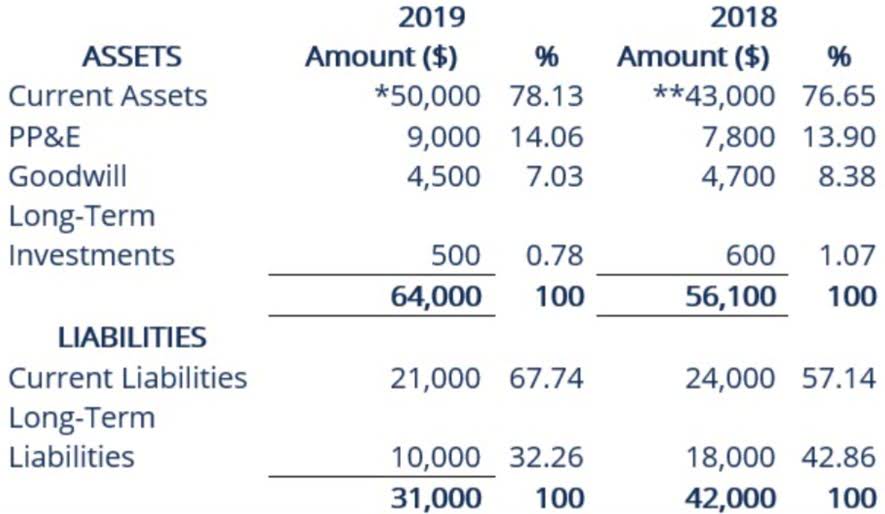What Is Equity and How Do You Calculate It for Shareholders?

This formula can give a slightly more accurate picture of what shareholders may expect if forced/decided to liquidate a company or exit. total equity formula However, you can use both formulas to calculate equity for shareholders equally well. The above shareholder equity formula should serve you well in most cases.
QuickBooks for Construction: Essential Accounting Guide
Equity for a start-up business is often derived from founders’ investments or external funding sources, such as venture capital or angel investors. Shareholders’ equity is, therefore, essentially the net worth of a corporation. If the company were to liquidate, shareholders’ equity is the amount of money that its shareholders would theoretically receive. When an investment retained earnings is publicly traded, the market value of equity is readily available by looking at the company’s share price and its market capitalization. For private entities, the market mechanism does not exist, so other valuation forms must be used to estimate value. Get instant access to video lessons taught by experienced investment bankers.
Example Calculation of Total Liabilities and Equity
By understanding Suspense Account equity, investors and analysts can figure out a business’s net worth, if it can make money, and how steady it is. Don’t miss out on understanding how Total Equity impacts a company’s financial health. By grasping this concept, you’ll be able to assess investments and make informed decisions that align with your financial goals. Take the time to understand Total Equity and its significance in evaluating a company’s financial stability.

Equity: Meaning, Formula, How to Calculate & Examples
Companies use a combination of equity and debt to finance their operations or invest in assets. Therefore ratios like “asset to equity,” “equity to asset,” (equity ratio), and “debt to equity” are crucial. In addition, these ratios help understand the relationship between a firm’s total assets, shareholders’ equity, and debt. In short, the owner’s equity formula is derived by re-arranging the basic balance sheet equation to solve for shareholders’ equity. The formula to calculate owner’s equity subtracts a company’s total liabilities from total assets.

Role of Common Equity in Financial Analysis
- It shows that for every debit, It shows that there is an equal and opposite credit for every debit, and the sum of all the assets is always equal to the total of all its liabilities and equity.
- In the stock market, shareholders’ equity (or owners’ equity for privately held companies) represents the difference between a company’s assets and liabilities.
- Equity represents the net value of a company, or the amount of money left over for shareholders if all assets were liquidated and all debts repaid.
- Consider this actual balance sheet for Bank of America Corporation (BAC), taken from their 2023 annual report.
- The Equity Value is the total value of a company’s stock issuances attributable to only common shareholders, as of the latest market close.
- So, understanding equity is crucial for anyone trying to gauge a company’s financial well-being.
These include the impact of dividends on equity, changes in equity due to share repurchases or issuances, and the effect of stock options or other equity-based compensation plans on total equity. It is important to note that Total Equity is not a measure of profit or revenue. Instead, it provides insight into the company’s financial position and its ability to cover its debts.
Looking at Equity in Different Business Phases
These can include cumulative/non-cumulative dividends, convertible/non-convertible status, callable/non-callable options, and participating/non-participating rights. These complexities offer investors chances to tailor their holdings to their individual preferences and risk tolerance. They can channel funds to activities that promote growth and profitability, like R&D, expanding production or buying new assets. It is important to note that these factors interact with each other and can have complex relationships. For example, an increase in liabilities may be offset by a significant increase in revenue or assets, resulting in a positive impact on equity. There’s been an increased focus on sustainable investing, looking for companies that prioritize ESG factors.

- So, while equity reflects ownership, ROE focuses on how well a company is utilizing that ownership (shareholder investment) to create profits.
- The book value of equity (BVE) is a measure of historical value, whereas the market value reflects the prices that investors are currently willing to pay.
- When evaluating the potential of any investment, it’s important to consider how it impacts your overall portfolio and long-term financial goals.
- This caused them to have consecutive quarters of losses, shrinking their total equity significantly.
- When this ratio of a company increases, it points out that it is under severe debt and is slowly losing its credibility to access additional debt financing.
In Q1 2022, Tech Innovators Inc. saw a $2M equity increase due to successful product launches and strategic investments. Conversely, HealthPlus Corp.’s equity dropped by $1.5M in Q2 2022, reflecting investment impacts from unprofitable ventures. Green Energy Ltd. experienced a $3.2M equity rise in Q3 2022, driven by favorable market fluctuations and solid financial strategies. Retail Giants Plc faced a $0.8M equity decrease in Q4 2022, influenced by declining sales and increased liabilities.
Subtracting Total Liabilities from Total Assets

You can use the Excel file to enter the numbers for any company and gain a deeper understanding of how balance sheets work. By using the above calculation, one can calculate the total asset of a company at any point in time. The asset equals the sum of all assets, i.e., cash, accounts receivable, prepaid expense, and inventory, i.e., $234,762 for 2014. The asset equals the sum to all assets, i.e., cash, accounts receivable, prepaid expense, and inventory, i.e., $305,483 for the year 2018. Understanding Total Equity is fundamental for anyone involved in financial investment or corporate finance. It’s a key marker of a company’s financial health and can provide valuable insights into investment decision-making.
